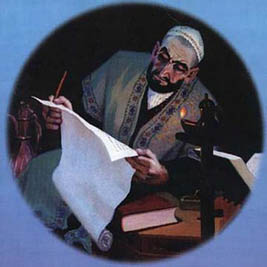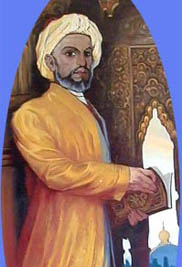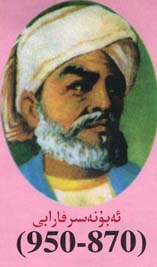Uyghur Language
Studies
Together we live this language.
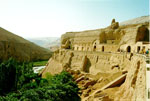
'“Americans who travel abroad for the first time are often shocked to discover that, despite all the progress that has been made in the last 30 years, many foreign people still speak in foreign languages”
Dave Barry quotes (American Writer and Humorist, b.1947)
Uyghur Language
The Uyghur language belongs to the Uyghuric or Southeastern group of the Turkic language family, which is controversially a branch of the Altaic language family.
The languages most closely related to it include Uzbek, Ili Turki, and Aini. Some linguists consider the Turkic languages to be part of the larger Altaic language family, but others believe there is not enough evidence to support this.
Early linguistic scholarly studies of Uyghur include Julius Klaproth's 1812 Dissertation on language and script of the Uyghur (Abhandlung über die Sprache und Schrift der Uyghuren) which was disputed by Isaak Jakob Schmidt. In this period, Klaproth correctly asserted that Uyghur was a Turkic language, while Schmidt believed that Uyghur should be classified with Tangut languages.
The dialects of Uyghur include Central Uyghur, Hotan , Lop , and Akto Türkmen. In addition, each locality in theUyghur region speaks a dialect slightly difference from the next, such as Kashgar, Qumul, Turpan, Ghulja, etc. Vocalic assimilation or r-deletion is not common in the Kasghar dialect, while common elsewhere. Similarly, vowel reduction is not common in the southern dialects.
Uyghur language, language used in the text is based on the Arabic alphabet based on the old Vivian Balakrishnan (UEY) and the Latin alphabet-based Uyghur Latin Yéziqi (ULY), while in the former Soviet Union, then the use of the territory of the Uyghur Cyrillic alphabet-based Cyril Falvey Man (USY).
Map of Turkic Languages
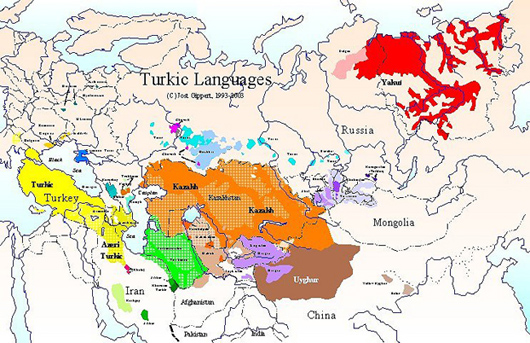
Classification of Turkic Languages
Classification
The dynamic history of the Turkic-speaking peoples makes it difficult to set up a classification of modem Turkic languages that combines geographic and genetic criteria. The following rough scheme represents an attempt to combine the current area distribution with genetic and typological features. It primarily distinguishes six branches, some of heterogeneous origin:
1 A southwestem (SW) branch, Oghuz Turkic
2 A northwestem (NW) branch, Kipchak Turkic;
3 A southeastem (SE) branch, Uyghur Turkic;
4 A northeastem (NE) branch, Siberian Turkic;
5 Chuvash, representing Oghur or Bulghar Turkic;
6 Khalaj, representing Arghu Turkic.
Subdivision
The six branches may be subdivided as follows:
Southwestern
SWw, a West Oghuz group comprising Turkish, Gagauz and Azerbaijanian.
SWe, an East Oghuz group comprising Turkmen and Khorasan Turkic.
SWs, a South Oghuz group comprising dialects of Iran (Kashkay, Sonqori, Aynallu etc.) and Afghanistan (Afshar).
Northwestern
NWw, a West Kipchak group comprising Kumyk, Karachay, Balkar, Crimean Tatar and Karaim.
NWn, a North Kipchak or Volga-Ural group comprising (Kazan Tatar, Mishar, West Siberian) and Bashkir. West Siberian Tatar (Tura, Baraba, Tomsk, Tümen, Ishim, Irtysh, Tobol, Tara and other dialects) is partly of different origin.
NWs, a South Kipchak or Aralo-Caspian group comprising Kazakh, Karakalpak, Kipchak Uzbek and Noghay. In spite of strong genetic bonds with Altay Turkic of the NEs group, modem Kirghiz may also be placed in the NWs group, since recent changes have brought it close to Kazakh. Though the so-called Fu-yü language of Manchuria is considered a Kirghiz dialect, it is closely related to South Siberian Turkic, e.g. Yenisey Turkic.
Southeastern
SEw, a western group comprising modern Uzbek and its various dialects, i.e. Oghuz Uzbek.
SEe, an eastem group comprising modern Uyghur, Taranchi and different Eastern Turki dialects of Kashgar, Yarkand, Khotan, Kerya, Cherchen, Aksu, Kucha.Turfan, etc. Deviating languages belonging to the SEe area are Yellow Uyghur, probably of NEs origin, and Salar, historically developed from the SW branch.
Northeastern
NEn, a North Siberian group comprising Yakut (Sakha) and Dolgan.
NEs, a heterogeneous South Siberian group comprising three subgroups:
l Sayan Turkic consisting of Tuvan (Soyot, Uryankhai) and Tofa (Karagas);
2 Yenisey Turkic comprising Khakas, Shor and related dialects (Saghay Qaca, Qizil);
3 Chulym Turkic comprising dialects such as Küerik;
4 Altay Turkic comprising Altay (Oyrot) and dialects such as Tuba, Qumanda, Qu, Teleut, Telengit.
Some Altay Turkic dialects are rather close to Kirghiz (NWs). As noted above, Yellow Uyghur may be of NEs origin, and Fu-yü displays similarities with Yenisey Turkic.
Lars Johanson (1998) The History of Turkic. In Lars Johanson & Éva Ágnes Csató (eds) The Turkic Languages. London, New York: Routledge, 81-125.
Classification Charts of Altaic Languages
| Altaic | ||||
| Mongolic | ||||
| Eastern | ||||
| Dagur | ||||
| Daur [dta] (China) | ||||
| Mongour | ||||
| Bonan [peh] (China) | ||||
| Dongxiang [sce] (China) | ||||
| Kangjia [kxs] (China) | ||||
| Tu [mjg] (China) | ||||
| Yugur, East [yuy] (China) | ||||
| Oirat-Khalkha | ||||
| Khalkha-Buriat | ||||
| Oirat-Kalmyk-Darkhat | ||||
| Western | ||||
| Mogholi [mhj] (Afghanistan) | ||||
| Tungusic | ||||
| Northern | ||||
| Even | ||||
| Even [eve] (Russian Federation (Asia)) | ||||
| Evenki | ||||
| Evenki [evn] (China) | ||||
| Oroqen [orh] (China) | ||||
| Negidal | ||||
| Negidal [neg] (Russian Federation (Asia)) | ||||
| Southern | ||||
| Southeast | ||||
| Nanaj | ||||
| Udihe | ||||
| Southwest | ||||
| Jurchen [juc] (China) | ||||
| Manchu [mnc] (China) | ||||
| Xibe [sjo] (China) | ||||
| Turkic | ||||
| Bolgar | ||||
| Chuvash [chv] (Russian Federation (Europe)) | ||||
| Eastern | ||||
| Ainu [aib] (China) | ||||
| Chagatai [chg] (Turkmenistan) | ||||
| Ili Turki (Uyghur) [ili] (China) | ||||
| Uyghur [uig] (China) | ||||
| Uzbek, Northern [uzn] (Uzbekistan) | ||||
| Uzbek, Southern [uzs] (Afghanistan) | ||||
| Yugur, West ( Yellow Uyghur) [ybe] (China) | ||||
| Northern | ||||
| Altai, Northern [atv] (Russian Federation (Asia)) | ||||
| Altai, Southern [alt] (Russian Federation (Asia)) | ||||
| Dolgan [dlg] (Russian Federation (Asia)) | ||||
| Karagas [kim] (Russian Federation (Asia)) | ||||
| Khakas [kjh] (Russian Federation (Asia)) | ||||
| Shor [cjs] (Russian Federation (Asia)) | ||||
| Tuva [tyv] (Russian Federation (Asia)) | ||||
| Yakut [sah] (Russian Federation (Asia)) | ||||
| Southern | ||||
| Azerbaijani | ||||
| Azerbaijani, North [azj] (Azerbaijan) | ||||
| Azerbaijani, South [azb] (Iran) | ||||
| Kashkay [qxq] (Iran) | ||||
| Khalaj, Turkic [klj] (Iran) | ||||
| Salchuq [slq] (Iran) | ||||
| Turkish | ||||
Balkan Gagauz Turkish [bgx] (Turkey (Europe)) |
||||
| Gagauz [gag] (Moldova) | ||||
| Khorasani Turkish [kmz] (Iran) | ||||
| Turkish [tur] (Turkey (Asia)) | ||||
| Turkmenian | ||||
| Turkmen [tuk] (Turkmenistan) | ||||
| Crimean Tatar [crh] (Ukraine) | ||||
| Salar [slr] (China) | ||||
| Western | ||||
| Aralo-Caspian | ||||
| Karakalpak [kaa] (Uzbekistan) | ||||
| Kazakh [kaz] (Kazakhstan) | ||||
| Kyrgyz [kir] (Kyrgyzstan) | ||||
| Nogai [nog] (Russian Federation (Europe)) | ||||
| Ponto-Caspian | ||||
| Balkar [krc] (Russian Federation (Europe)) | ||||
| Karaim [kdr] (Ukraine) | ||||
| Krimchak [jct] (Ukraine) | ||||
| Kumyk [kum] (Russian Federation (Europe)) | ||||
| Uralian | ||||
| Bashkort [bak] (Russian Federation (Europe)) | ||||
| Chulym [clw] (Russian Federation (Asia)) | ||||
| Tatar [tat] (Russian Federation (Europe)) | ||||
| Urum [uum] (Georgia) |
From Ethnologue
FEATURED INFO
Altaic Languages
The Altaic languages are spread over an area that is even larger than that covered by Uralic. Of the three branches of Altaic, Turkic ranges from Anatolia to the Volga basin and central Asia; Mongolian extends from China and Mongolia as far west as the lower Volga and Afghanistan; and Manchu-Tungus occupies the northern coast of northeastern Siberia, and runs as far south as the Amur and as far west as the Yenisei, which divides Siberia into its eastern and western halves.
Turkic
Written evidence of the Turkic languages begins with the Orkhon inscriptions of the 8th century AD, found near the river Selenga in Mongolia, and continues wherever and whenever a Turkic population came into contact with one of the higher religions, such as Islam, Judaism, Christianity, or Manichaeism.
Linguistically, the Turkic languages form a tightly knit group. Knowledge of one Turkic language usually enables an investigator to analyze words and simple sentences in any other Turkic language except Chuvash. To explain this, it is hypothesized that an original, proto-Turkic language split into two branches: West Turkic and East Turkic. West Turkic went its own way, both phonetically and in terms of contact with other languages, and eventually became Chuvash, now spoken by 1,700,000 people living in the Volga Basin in the Chuvash Autonomous Republic of the former USSR.
The early speakers of East Turkic must have remained together for a longer time and split up only comparatively recently into the many present-day languages. Still, the East Turkic languages are usually classed into five subdivisions: Oghuz, mainly represented by Turkish, the language of Turkey; Kipchak, which has over a dozen representative languages, including Kazan Tatar, Kazakh, Kirghiz, and Bashkir; Sayan Turkic, represented by Tuvan, Altai, Shor, and several other languages; Turki, represented primarily by Uyghur and Uzbek; and Yakut, which comprises Yakut Proper, Khakas, and Dolgan.
Turkish, like Finnish, has vowel harmony. It also uses cases and possessive suffixes, which can combine as in ev-ler-im-in, "of my houses," made up of the word elements found in ev-ler, "houses," ev-im, "my house," and ev-in, "of the house." Such agglutination is also characteristic of Turkish verbs: compare gel-mek, "to come," gel-ir-im, "I come," gel-iyor-um, "I am coming," gel-di-m, "I came," gel-me-mek, "not to come," and gel-me-d-in, "I did not come."
Uyghur Language
Uyghurs speak an Altaic language similar to Uzbek and Turkish. Most Uyghur in cities can speak Chinese. Some speak it very well. Some are just minimally conversant. Some speak Arabic and Turkish fluently yet speak only a little Chinese. Many elderly Uyghurs can’t speak Chinese at all. Many Uyghur traders can speak a half dozen languages, including Uyghur, Chinese, Russian, Uzbek, Kazakh, Kyrgyz and Turkish.
Uyghur has traditionally written with Arabic script that appeared in the 13th century and has been adapted to accommodate Uyghur sounds not found in Arabic. Ancient Uyghur writing, abandoned long ago, was based on the alphabet of the Sogdians. This language provided the basis for Mongol script used from era of Genghis Khan until it was replaced by Russian in the 1940s.
The Uyghur script is related to the alphabets of Western Asia and has been adopted by many Turkic-speaking peoples. Zhuang, Tibetan, Uyghur and Mongolian are official minority languages that appear on Chinese banknotes.
Many Uyghur can use the Arabic alphabet. Some Uyghur children learn Arabic script in primary school. Others learn Arabic written in Roman letters. Most secondary school classes are taught exclusively in Chinese.
Many Uyghur use just one name.
Orkhon Alphabet
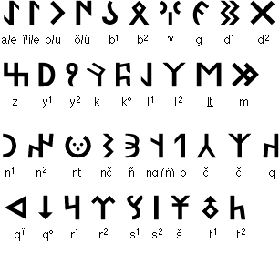
Origin
The earliest known examples of writing in any Turkic language were found in the Orkhon river valley in Mongolia in the 19th century. They date from the early 7th century AD and the script in which they are written is known as the Orkhon alphabet. Inscriptions dating from the later 8th century AD in a slight variant of the Orkhon alphabet, known as Yenisei or Siberian runes, have also been found around Yenisei and other parts of Siberia.
Because of a superficial resemblance to the Runic alphabet, the alphabet is also known as Orkhon or Turkic runes. This resemblance is probably a result of the writing materials used - most inscriptions are in hard surfaces, such as stone or wood, and curved lines are difficult to inscribe in such surfaces.
The Orkhon alphabet is thought to have been derived from or inspired by the description of the surrounding elements such as, arrow, bow, bayonet, fish, yurts, and mountains etc . By the 9th century AD, the Orkhon and Yenisei alphabets were replaced by the Uyghur alphabet, which developed from the cursive version of the Sogdian script.
Notable features
Written mainly from right to left in horizontal lines, though some inscriptions are written vertically with the letters rotated by 90°. When written vertically, it read from bottom to top and right to left. Some consonants have two forms, one of which was used with front vowels, the other with back vowels.

Example: Orkhon inscription reading RTL :'T²NGR²I' — transliteration :'/teŋri/' — transcription :'teñri' — record with modern Turkic alphabet:'the skygod' or 'the eternal blue sky' indicating the highest god — ancient mean
Old Uyghur Alphabet

The Uyghur alphabet was derived from the cursive Sogdian script, which ultimately traces back to Aramaic. However, unlike Sogdian and Aramaic, the Uyghur script is written from top to bottom and in columns going from left to right, like Aramaic turned 90 degrees counterclockwise. In fact, even the letters themselves were rotated 90 degrees.
With a few exceptions, letters in Uyghur have three variants depending on location within a word. At the beginning of a word, the letter can take on the initial form. At the end of a word, the final variant is used. And in all other places, the medial variant is employed.
The Uyghur alphabet was adopted to write Mongolian in 12th century CE.
Arbic and Latin Alphabet
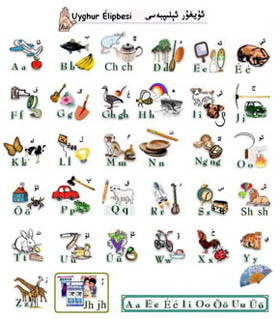
Arabic
The Arabic-derived script (Kona Yéziq 'Old Script') is actually a true alphabet, with all vowels fully represented. It was used in its old form from the late Middle Ages until the 1920s. Used in the Perso-Arabic Chaghatai script, Arabic-specific letters were removed in 1937, and an expanded vowel system was instituted in 1954. It was officially replaced by the Pinyin script in Uyghur Region during the Cultural Revolution, but was still used privately. A new version of Kona Yéziq with separate vowels representing /ø/ and /y/ was reinstated in the 1980s and is still widely used.
Latin Alphabet
The Pinyin-derived Latinate script (Yéngi Yéziq 'New Script') was instituted by China in the 1960 and '70s during the Cultural Revolution, but it never gained widespread acceptance, due to cultural resistance, feelings of estrangement from other Uyghur peoples, fear of linguistic assimilation, and "reform fatigue". However, it still remains an "authorized option" since after the widespread of World Wide Web.
